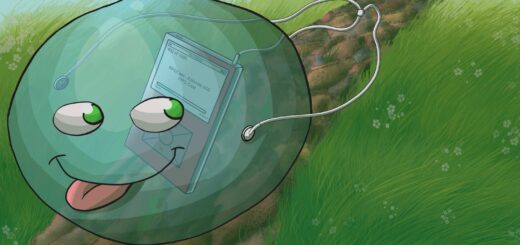Backloggin’ the Year – The Backlog Boondoggle, April to June 2021
Welcome to Backloggin’ the Year, a feature that discusses the challenges and excitement that comes with working through your backlog. In this edition, Pascal finds that a summer off work actually results in some small backlog shrinkage.
I’m halfway through this year’s backlog bustin’, and even though there were a few small successes to speak of, it’s become obvious that most of my backlog will be coming with me into 2022. Still, being home for summer vacation translated into a good amount of gaming time, and finishing up a major review project felt like a weight off my shoulders, letting me spend time on stuff I wanted to play just for the heck of it. Here we go.
The RPGs: Yakuza 3, Yakuza 4, Yakuza 5, NieR Replicant, Suikoden
Okay, so technically Yakuza 3 doesn’t really belong in this backlog article; I finished it earlier this year, and it would’ve made an appearance in the last outing if I hadn’t treated the entire Remastered Collection as one entity for review. Instead, I’m lumping it in here along with Yakuza 4 and Yakuza 5. Since I’ve already gushed about this trio of games at length, I’ll keep it short and sweet here. These games — heck, this entire series — is mandatory gaming as far as I’m concerned. Still, I can’t deny that getting through this review lifted a heavy weight off my brain. Now I can relax, though I still need to play Yakuza 6…and Judgment…and Like a Dragon…with Judgment’s sequel on the way too…
NieR Replicant is pretty much the same story; the review already says everything I mean to about the game. I’ve had NieR: Automata waiting in the backlog for a while, and I’ll feel more at ease finally playing it now that I’ve got this one under my belt. I like to play games in order — I’m weird like that.
On that note, it turns out that’s the one thing my Vita has gotten much use for: to let me download and play older RPGs in order to experience how keystone franchises got their start. Suikoden became my handheld game to take a break from the massive console RPGs I was battling my way through. It became an interesting palate cleanser in multiple ways, not the least of which was its straightforward story, often told in just a handful of no-nonsense dialog boxes and lacking all the fluff and padding (as well as some context) of more modern games. What’s funny is how quaint this game seemed to me, even though it came out on the PlayStation — that’s the era that felt like the next leap in gaming not all that long ago, and game us massive gems like Final Fantasy VII.
It’s not all positives though — not by a long shot. The game probably works best if picking a core party and sticking to it, something I did not do. It seems like I changed by party members every five minutes, and with “108 Stars of Destiny”, many of whom are playable, who can really blame me? So that meant upgrading weapons and purchasing equipment many, many times over, which is already an expensive proposition for a standard party. Not to mention the character-specific inventory system is a bugbear to handle, and a handful of gatekeeper bosses had me stuck longer than I probably should have been. I researched a bit after rolling credits, and found out that there are apparently combination attacks when the right characters are paired up. I sure wish I’d gotten some of those.
The Non-RPGs: Return of the Obra Dinn, Blossom Tales, Mirror’s Edge Catalyst, 7’scarlet
I scooped up a physical copy of Return of the Obra Dinn from Limited Run Games. Combing through a turn-of-the-nineteenth-century ghost ship with a magical pocket watch in order to puzzle out exactly what happened to each and every one of its crew members sounds like the kind of unique experience that’s right up my alley. Seeing the kind of creepy, shocking, and downright incredible events that this vessel and her crew have been through in its voyage was spellbinding, if pretty damn challenging at times, from the very first scene up until the final moment. If there’s such a thing as binge-playing, this one is a great one for it!
Blossom Tales I’m going to have to be a little less gushy about. It pretty much felt like a very direct descendant of The Legend of Zelda: A Link to the Past, which is a great thing, but it was way too short. With only a handful of dungeons, it felt more like the Light World opening section of Link to the Past; you know, before the game properly gets going.
I thought the original Mirror’s Edge was pretty enjoyable, and Mirror’s Edge Catalyst expands the whole parkour concept into a large open-world setting. It was certainly an experience, and this starkly clean and polished vision of the future is such a nice change to the grungy dystopian worlds I spend so much more time in. That said, the large map eventually did descend into busywork, some of which I had a good time with, and some that I learned to avoid. If nothing else, though, the final mission that required an action-packed ascent of the city’s tallest structure was pretty jaw-dropping.
I don’t think he knows this, but I picked up the visual novel 7’scarlet after our own EiC Alex Fuller covered it in an Adventure Corner back in 2018. Visual novels tend to take me a long time to complete, and this one in particular wasn’t quite to my taste, with an awful lot of romance to slog through before the slightly more thrilling shift towards the “disappeared brother” mystery towards the end. Some nice visuals and music, good voice acting, but I think I’d rather stick to the darker VNs from here on out (thinking of going for the physical release of Doki Doki Literauture Club, for one).
The Adventures: Chronicle of Innsmouth: Mountains of Madness, Riddle of the Sphinx, The Fabled Woods, Root Film
There’s a lot of adventuring goodness here! (Well, some.) Last time I talked about Chronicle of Innsmouth; this time around it’s the sequel to that point-and-click adventure, Chronicle of Innsmouth: Mountains of Madness. Where the second entry had more financial backing through crowdfunding, and thus visibly better production values, I actually enjoyed the previous installment over this one. It does still have that appeal of being absolutely drenched in dark, morose vibes, with more than a few Lovecraftian creatures to encounter.
Both Riddle of the Sphinx and The Fabled Woods are free-roaming first-person adventures. That’s about where the similarities end, though. The former is a quality puzzle extravaganza set in ancient Egypt that lets players explore the sphinx, the Great Pyramid, and a number of other exotic locations. What makes its puzzles so enjoyable, and occasionally really damn challenging, is that figuring out what it is and how you’re even meant to solve it is often part of the process. The latter, on the other hand, is a one-hour walking simulator that has a decent concept of solving the disappearances of several people in the woods, but there’s just not a ton of inherent excitement in walking forward for an hour.
Finally, Root Film is a spiritual successor of some sort to visual novel Root Letter, though in practice it has a lot more in common with Phoenix Wright. Just like the famous Ace Attorney, your role is to investigate a series of murders, though the game is unfortunately very light on interactive things like collecting or presenting evidence. That’s not to even mention how easy the “confession” sections are, where you have to actually try in order to purposely lose a case. On the plus side, the art is vibrantly colorful and looks great on a large screen TV, and the Japanese voice acting is great, especially the snarky characters!
The Rest: Noir Chronicles: City of Crime, Hysteria Project, Xeodrifter
I’ll keep this section extremely short, owing to the fact that two of these are barely worth remembering anything about. Noir Chronicles: City of Crime is an Artifex Mundi hidden object adventure — ’nuff said. Those who enjoy the developer’s work will find this to be a competent release for sure, but I get these type of games aren’t for everybody (they make a good every-now-and-then palate cleanser). Meanwhile, Hysteria Project is a “game” I found on the Vita store; basically it’s ugly FMV of the cameraman running through the woods to get away from a killer, and you have to push a button every now and then to either continue the elude him or be caught and die. “Fun”. Ending on a more positive note, Xeodrifter is a small but entertaining Metroidvania about a little dude in a spacesuit who visits four planets to defeat bosses and get upgrades.
My physical backlog pile has only shrunken a very little bit so far this year, and I fell victim to some digital summer sales on the PlayStation Store and Nintendo eshop. But finishing big-ticket games like some of the ones above and making new smaller-fry purchases still feels at least a little satisfying. I feel good that I’ll have at least a few things knocked off the pile by next time, or at least by year’s end.
2021 at a Glance
Total Games Completed: 28
Total RPGs Completed: 6














Recent Comments